#14 May 1869
Explore tagged Tumblr posts
Photo

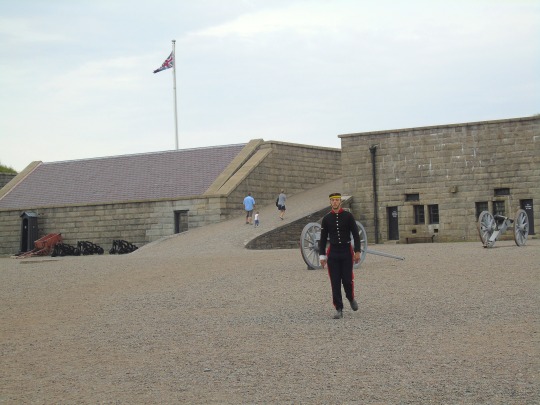




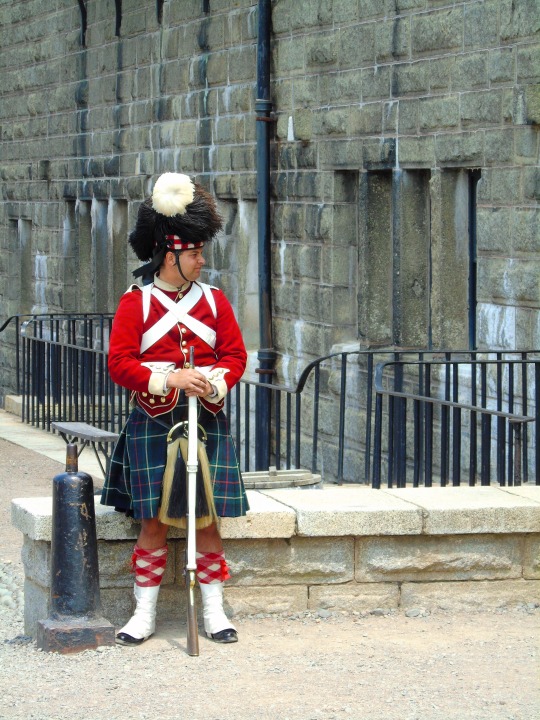

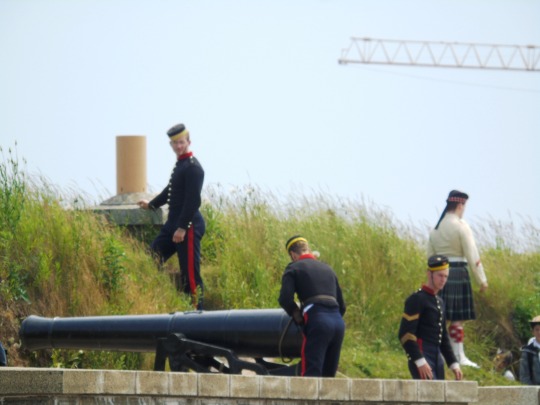
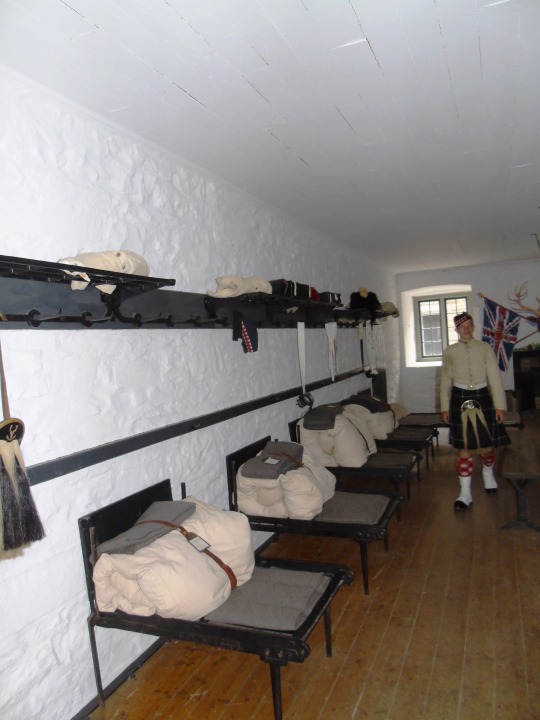
The renowned 78th Highlanders Regiment of Foot were stationed at Halifax for almost three years (1869-1871). The regiment arrived in Halifax on the afternoon of May 14, 1869, aboard the troopship HMS Crocodile.
A total of 765 men disembarked in full dress uniform. The Regiment was divided into two depots and eight service companies, consisting in all of 34 officers, 49 sergeants, 21 drummers, 6 pipers, and 600 rank and file.
#78th Highlanders Regiment of Foot#arrived#14 May 1869#anniversary#travel#Halifax Citadel National Historic Site of Canada#Fort George#vacation#Third Brigade of the Royal Artillery#noon cannon#tourist attraction#landmark#Nova Scotia#Canadian history#summer 2015#original photography#interior#exterior#architecture#cityscape
27 notes
·
View notes
Photo
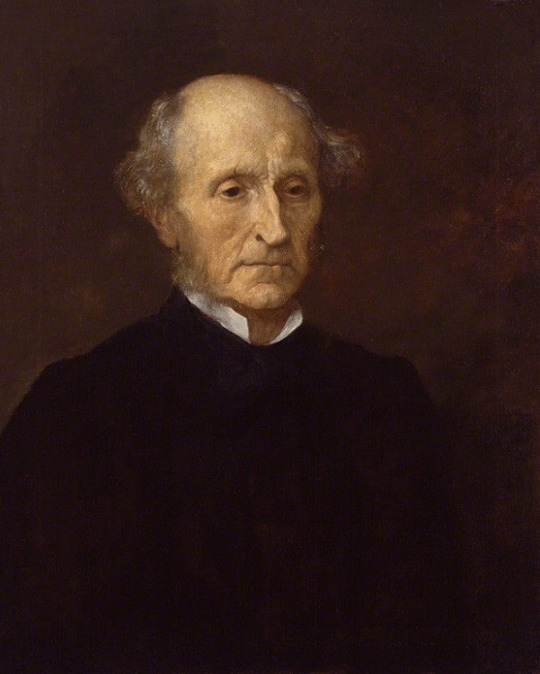
John Stuart Mill
John Stuart Mill (1806-1873) was a highly influential English philosopher of the Victorian Era. His writings were influenced by the Enlightenment thinkers and German Romanticism. Besides philosophical works, he wrote on mathematics, language, and logic. Well ahead of his time, he advocated the abolition of slavery and was a proponent of both children's and women's rights. However, he is best remembered for his essays on utilitarianism, a philosophy developed by Jeremy Bentham (1748-1832).
Life
Born on 20 May 1806 in London, England, John Stuart Mill was the son of the Scottish radical thinker James Mill. James had moved to London to promote Bentham's utilitarian philosophy. Through his father's use of the Socratic method, John was educated by James in the psychological and educational principles of utilitarianism. He was schooled in law, psychology, economics, mathematics, and logic. James Strangroom in his The Great Philosophers wrote that Mill's father's aim was to turn him into a calculation machine. Some believe James accomplished his goal. At the age of three, he read Greek, and at age eight, Latin. By the time he was 14, he had read most of the classic Greek and Latin texts in their original languages. Later, while still in his teens, he edited many of Bentham's unpublished manuscripts.
Like his father, at age 17, he began to rise through the ranks of the British East India Company, remaining there until it closed in 1858. He suffered a nervous breakdown when he was 20. Many believe his repeated bouts of depression were a reaction to the impersonal disciplined teaching of his father and the overwhelming domination that his father imposed on everything in his life. In his The Great Philosophers, Jeremy Strongroom wrote that Mill had been prepared for argumentation and analysis but received no training to help him cope with emotional moods. Luckily, his newfound interest in culture, theater, and the works of English poet William Wordsworth (1770-1850) helped him escape his depression.
In 1852, he married a long-time friend, Harriet Taylor, two years after the death of her first husband. She proved to have a significant influence on Mill as his foremost consultant and critic. She died in 1858. Seven years later, he became a member of Parliament (1865-1868) serving only one term. Mill died on 8 May 1873 in Avignon, France. Among his major works are A System of Logic (1843), On Liberty (1859), and The Subjection of Women (1869).
Continue reading...
24 notes
·
View notes
Text
Chapter 17 Yap Session: YOU ARE NOT THE MAIN VILLAIN
Also, an interesting find on Hokkaido and puns.
Other Yaps (To Be Updated as I Go): 14, 15, 16, 17, 18

It's not a coincidence that Acca mentions Hokkaido
Hokkaido is known for being the agricultural breadbasket of Japan and a popular place for tourists to visit due to its natural scenery and cold temperatures. It is also where 90% of Japan's kombu is created due to the cold waters of Hokkaido being ideal for growing them as well as having high-quality seafood for the same reason. In addition to that, Hokkaido is where the Ainu people once resided. I say ONCE resided because the island was annexed and colonized in 1869 by Japan, forcing the Ainu to assimilate soon after. To this day, the Ainu continue to face economic and social hardships because of discrimination and many individuals grow up not knowing they are Ainu or are forced to hide their background to minimize oppression. The Ainu continue to be greatly restricted in terms of maintaining practices and customs, and there have been cases where attempts to revive or provide better laws for the Ainu are met with heavy pushback. Even prior to the annexation, the Ainu faced mistreatment from the Japanese government, which contributed to their population decline leading up to the event.
This is very similar to Hawaii's history. Hawaii serves as a main exporter of tropical fruits and remains a popular tourist attraction due to its environment while also having a history of annexation and treatment of indigenous communities- the difference being that Hokkaido is more known for its colder temperatures while Hawaii is known for its subtropic temperatures instead.
Usagi's a master of puns
The pun Usagi makes with MRI translates to "M - 無 R - 理 I - 言って スミマセン, or MuRi Itte sumimasen. (Sorry for asking you to do something unreasonable). "IDD" and "KKD" are common text phrases used in Japanese, similar to "BFF" being used in English. According to the English translator Kewl, various suggestions were made to localize Usagi's words in a way that is still natural yet comedic. Eventually, "Man's a Real Idiot", "I’m Deeply Devoted", and "Kind Kindred Dude" were chosen.

How corporations work may hint at Acca not being the main villain
In a typical western public company, there are two groups that lead a corporation: the officers and the board of directors.
The officers, such as the CEO and CTO, are the ones who make the decisions and handle day-to-day operations of the company. However, they are not 100% in complete power. They have to work with the board of directors, who theoretically work as the advisors to the CEO and are led by a leader called the chairperson. The CEO himself could be the chairperson too, but there's always someone who represents the leader of the board and may be called the "lead director" to differentiate themselves from the CEO. The board of directors serve as advisors but they also have the ability to override and even FIRE the CEO under the pretense of protecting the company's investors. Should a CEO commit a crime, performed badly as a leader, or done anything controversial that the shareholders consider to be bad for the company they invest in, the board can boot the CEO out and find another CEO to take their place. Usually, it is another member of the board that is elected by the board to succeed but anyone could be chosen by the board to become the new CEO. This is all done legally but you can imagine some politics and manipulation at play; Acca could try to fight back or plant a successor to maintain power, or there is someone on the board who wanted to take his position and this was all part of the plan, or... there's some sort of bigger conspiracy at play.
There are already some good reasons for people try and oust Acca out. He himself is introduced as not well liked and having a terrible character, and Howler Co.'s market value significantly because of the land forfeiture situation implied to be because of his doing. Not only that, there's always that general sense of people simply wanting to gain power at all cost- even if it means taking someone down to get their position. Once word gets out and the shareholders catch wind of this, they're going to be hounding the board to do something to protect their investments; we've already seen one shareholder, Dolphin Bank, pulling out of their investments. The board will then fire Acca from his position as a way to scapegoat him, claiming he was responsible for the lost in value, and the board's "solution" will be to put someone else as CEO to ease the shareholders' minds. This someone else could be the actual main villain, or the chairperson/lead director is the main villain this whole time. It could be possible that either characters planned Acca's downfall this whole time and it will be them that will face Jodio in the end.
#the jojolands#jjba#jojos bizarre adventure#jojo part 9#jojolands#jjba part 9#jjba jojolands#jojolands yapping#i have so many theories on who the actual main villain could be#acca howler#usagi alohaoe
20 notes
·
View notes
Text

John Elder, marine engineer and shipbuilder, died on the 17th of September, 1869.
John Elder was a marine engineer and shipbuilder, who developed practical compounding marine engines and conceived the modern integrated shipbuilding yard, basically without his work the shipbuilding yards of the Clyde would not be the same. Elder gave the world major contributions to engineering and shipbuilding:
The practical development of compounding in marine engines. This made long-distance steam shipping both possible and economic, and also improved the economics of shorter-haul steam navigation. It allowed the extension of steam power to cargo liners and tramp ships, and greatly accelerated the substitution of steam for sail in the world's shipping. To this should be added his patent for triple and quadruple expansion marine engines, foreshadowing later 19th century developments.
He initiated the conception of the modern heavy engineering workshop, with overhead gantry cranes developed, as seen in the still-existing Fairfield Engine Works in Govan.
The conception of the modern integrated shipbuilding yard. With only minor alterations the plan of the present Govan Shipyard survives largely as John Elder conceived it. It was the foremost yard on the Clyde until the great liners were built at John Brown's, and has outlasted most, including the builder of the "Queens". As one of BAe Systems' yards, it is still a highly effective production unit, notable for building the largest elements of the Queen Elizabeth Class aircraft carriers.
At its peak production in 1868-69, the final eighteen months of Elder's life, the Fairfield Yard employed 4,000 people and produced 18 engine sets of 6100 aggregate horsepower and 14 ships of 27,000 aggregate tonnage. Elder had created one of the greatest enterprises of its kind in the world.
Elder was also a model employer of his 4,000 workforce, with a real concern for the well-being of his men and their families. At his funeral, as reported by the Rev. Norman MacLeod "a very army of workmen, dressed like gentlemen, followed his body - column after column. Respectful crowds lined the streets, as if gazing on the burial of a prince; and every one of us .. felt that we had left a friend behind us."
His statue in Elder Park, Govan, erected by public subscription in 1888, carries the inscription: "By his many inventions, particularly in connection with the compound engine, he effected a revolution in engineering second only to that accomplished by James Watt, and in great measure, originated the developments in steam propulsion which have created modern commerce" and: "His unwearied efforts to promote the welfare of the working classes, his integrity of character, firmness of purpose, and kindness of heart, claim, equally with his genius, enduring remembrance".
If you have ever been in The Lord of the Isles Wetherspoon bar in Renfrew, you may have notice some prints and memorabilia of Elder in the pub. Elder Park, Govan is also named in his honour, you will also see the statue there.
18 notes
·
View notes
Text

Il y a deux sortes de révolutions : les révolutions en arrière et les révolutions en avant. Révolutions pour révolutions, il vaut mieux servir celles de l'avenir ; car si l'avenir a des illusions, sans doute comme toute chose humaine, le passé n'a que des ruines.
Alphonse de Lamartine, Les pensées diverses (1869)
Je ne suis pas française, mais j'ai de la famille et des amis français. J'aime vivre en France. En tant que monarchiste, je n'aime pas la Révolution française, mais j'aime son histoire, sa culture et son peuple. C'est pour cette raison que je peux faire la fête aujourd'hui.
Je vous souhaite à tous une très bonne fête en ce 14 juillet !
Vive la France !
#lamartine#alphonse de lamartine#quote#france#french#french revolution#revolution#bastille day#fete nationale 2023#nation#history#paris#eiffel tower#celebrations#society
86 notes
·
View notes
Text
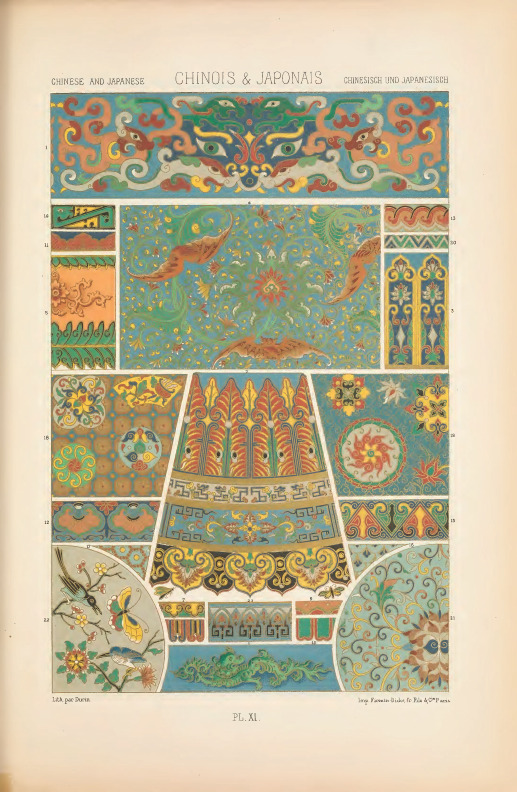
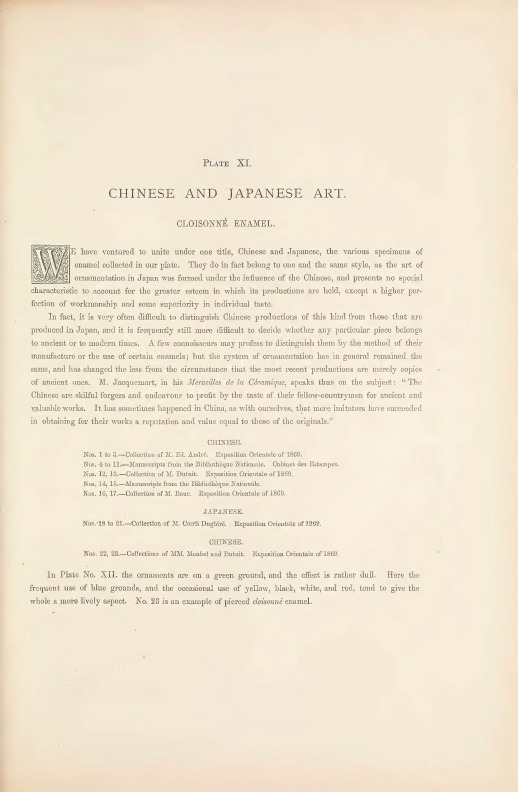
Albert Racinet's "Polychrome Ornament," 1869 PLATE XI. CHINESE AND JAPANESE ART. CLOISONNE ENAMEL.
WE have ventured to unite under one title, Chinese and Japanese, the various specimens of enamel collected in our plate. They do in fact belong to one and the same style, as the art of ornamentation in Japan was formed under the influence of the Chinese, and presents no special characteristic to account for the greater esteem in which its productions are held, except a higher perfection of workmanship and some superiority in individual taste. In fact, it is very often difficult to distinguish Chinese productions of this kind from those that arc produced in Japan, and it is frequently still more difficult to decide whether any particular piece belongs to ancient or to modern times. A few connoisseurs may profess to distinguish them by the method of their manufacture or the use of certain enamels; but the system of ornamentation has in general remained the same, and has changed the less from the circumstance that the most recent productions are merely copies of ancient ones. M. Jacquemart, in his Merveilles de la Ceramique, speaks thus on the subject: "The Chinese are skilful forgers and endeavor to profit by the taste of their fellow-countrymen for ancient and valuable works. It has sometimes happened in China, as with ourselves, that mere imitators have succeeded in obtaining for their works a reputation and value equal to those of the originals."
CHINESE. Nos. l to 3.-Collection of 11L Ed. Andre. Exposition Orientale of 1869. Nos. 4 to 11.-Manuscripts from the Bibliotheque Nationale Cabinet des Esfampes. Nos. 12, 13.-Collection of M Dutnit. Exposition Orientale of 1869. Nos. 14, 15.-:Manuscripts from the Bibliothegue Nationale. Nos. 16, 17 .-Collection of M. Baur. Exposition Orientale of 1869. JAPANESE. Nos.·18 to 21.-Collection of M. Coerli Duglere. Exposition Orieutale of 1869. CHINESE. Nos. 22 - 23.-Collections of MM. Monbel and Dutuit. Exposition Orientale of 1869.
#art#1800s#1800s art#cultural art#albert racinet#antiquity#illustration#design#ancient art#ancient china#ancient japan#chinese art#japanese art#aesthetic#chinese aesthetic#japanese aesthetic#19th century
13 notes
·
View notes
Text
The napoleonic marshal‘s children
After seeing @josefavomjaaga’s and @northernmariette’s marshal calendar, I wanted to do a similar thing for all the marshal’s children! So I did! I hope you like it. c: I listed them in more or less chronological order but categorised them in years (especially because we don‘t know all their birthdays). At the end of this post you are going to find remarks about some of the marshals because not every child is listed! ^^“ To the question about the sources: I mostly googled it and searched their dates in Wikipedia, ahaha. Nevertheless, I also found this website. However, I would be careful with it. We are talking about history and different sources can have different dates. I am always open for corrections. Just correct me in the comments if you find or know a trustful source which would show that one or some of the dates are incorrect. At the end of the day it is harmless fun and research. :) Pre 1790
François Étienne Kellermann (4 August 1770- 2 June 1835)
Marguerite Cécile Kellermann (15 March 1773 - 12 August 1850)
Ernestine Grouchy (1787–1866)
Mélanie Marie Josèphe de Pérignon (1788 - 1858)
Alphonse Grouchy (1789–1864)
Jean-Baptiste Sophie Pierre de Pérignon (1789- 14 January 1807)
Marie Françoise Germaine de Pérignon (1789 - 15 May 1844)
Angélique Catherine Jourdan (1789 or 1791 - 7 March 1879)
1790 - 1791
Marie-Louise Oudinot (1790–1832)
Marie-Anne Masséna (8 July 1790 - 1794)
Charles Oudinot (1791 - 1863)
Aimee-Clementine Grouchy (1791–1826)
Anne-Francoise Moncey (1791–1842)
1792 - 1793
Bon-Louis Moncey (1792–1817)
Victorine Perrin (1792–1822)
Anne-Charlotte Macdonald (1792–1870)
François Henri de Pérignon (23 February 1793 - 19 October 1841)
Jacques Prosper Masséna (25 June 1793 - 13 May 1821)
1794 - 1795
Victoire Thècle Masséna (28 September 1794 - 18 March 1857)
Adele-Elisabeth Macdonald (1794–1822)
Marguerite-Félécité Desprez (1795-1854); adopted by Sérurier
Nicolette Oudinot (1795–1865)
Charles Perrin (1795–15 March 1827)
1796 - 1997
Emilie Oudinot (1796–1805)
Victor Grouchy (1796–1864)
Napoleon-Victor Perrin (24 October 1796 - 2 December 1853)
Jeanne Madeleine Delphine Jourdan (1797-1839)
1799
François Victor Masséna (2 April 1799 - 16 April 1863)
Joseph François Oscar Bernadotte (4 July 1799 – 8 July 1859)
Auguste Oudinot (1799–1835)
Caroline de Pérignon (1799-1819)
Eugene Perrin (1799–1852)
1800
Nina Jourdan (1800-1833)
Caroline Mortier de Trevise (1800–1842)
1801
Achille Charles Louis Napoléon Murat (21 January 1801 - 15 April 1847)
Louis Napoléon Lannes (30 July 1801 – 19 July 1874)
Elise Oudinot (1801–1882)
1802
Marie Letizia Joséphine Annonciade Murat (26 April 1802 - 12 March 1859)
Alfred-Jean Lannes (11 July 1802 – 20 June 1861)
Napoléon Bessière (2 August 1802 - 21 July 1856)
Paul Davout (1802–1803)
Napoléon Soult (1802–1857)
1803
Marie-Agnès Irma de Pérignon (5 April 1803 - 16 December 1849)
Joseph Napoléon Ney (8 May 1803 – 25 July 1857)
Lucien Charles Joseph Napoléon Murat (16 May 1803 - 10 April 1878)
Jean-Ernest Lannes (20 July 1803 – 24 November 1882)
Alexandrine-Aimee Macdonald (1803–1869)
Sophie Malvina Joséphine Mortier de Trévise ( 1803 - ???)
1804
Napoléon Mortier de Trévise (6 August 1804 - 29 December 1869)
Michel Louis Félix Ney (24 August 1804 – 14 July 1854)
Gustave-Olivier Lannes (4 December 1804 – 25 August 1875)
Joséphine Davout (1804–1805)
Hortense Soult (1804–1862)
Octavie de Pérignon (1804-1847)
1805
Louise Julie Caroline Murat (21 March 1805 - 1 December 1889)
Antoinette Joséphine Davout (1805 – 19 August 1821)
Stephanie-Josephine Perrin (1805–1832)
1806
Josephine-Louise Lannes (4 March 1806 – 8 November 1889)
Eugène Michel Ney (12 July 1806 – 25 October 1845)
Edouard Moriter de Trévise (1806–1815)
Léopold de Pérignon (1806-1862)
1807
Adèle Napoleone Davout (June 1807 – 21 January 1885)
Jeanne-Francoise Moncey (1807–1853)
1808: Stephanie Oudinot (1808-1893) 1809: Napoleon Davout (1809–1810)
1810: Napoleon Alexander Berthier (11 September 1810 – 10 February 1887)
1811
Napoleon Louis Davout (6 January 1811 - 13 June 1853)
Louise-Honorine Suchet (1811 – 1885)
Louise Mortier de Trévise (1811–1831)
1812
Edgar Napoléon Henry Ney (12 April 1812 – 4 October 1882)
Caroline-Joséphine Berthier (22 August 1812 – 1905)
Jules Davout (December 1812 - 1813)
1813: Louis-Napoleon Suchet (23 May 1813- 22 July 1867/77)
1814: Eve-Stéphanie Mortier de Trévise (1814–1831) 1815
Marie Anne Berthier (February 1815 - 23 July 1878)
Adelaide Louise Davout (8 July 1815 – 6 October 1892)
Laurent François or Laurent-Camille Saint-Cyr (I found two almost similar names with the same date so) (30 December 1815 – 30 January 1904)
1816: Louise Marie Oudinot (1816 - 1909)
1817
Caroline Oudinot (1817–1896)
Caroline Soult (1817–1817)
1819: Charles-Joseph Oudinot (1819–1858)
1820: Anne-Marie Suchet (1820 - 27 May 1835) 1822: Henri Oudinot ( 3 February 1822 – 29 July 1891) 1824: Louis Marie Macdonald (11 November 1824 - 6 April 1881.) 1830: Noemie Grouchy (1830–1843) —————— Children without clear birthdays:
Camille Jourdan (died in 1842)
Sophie Jourdan (died in 1820)
Additional remarks: - Marshal Berthier died 8.5 months before his last daughter‘s birth. - Marshal Oudinot had 11 children and the age difference between his first and last child is around 32 years. - The age difference between marshal Grouchy‘s first and last child is around 43 years. - Marshal Lefebvre had fourteen children (12 sons, 2 daughters) but I couldn‘t find anything kind of reliable about them so they are not listed above. I am aware that two sons of him were listed in the link above. Nevertheless, I was uncertain to name them in my list because I thought that his last living son died in the Russian campaign while the website writes about the possibility of another son dying in 1817. - Marshal Augerau had no children. - Marshal Brune had apparently adopted two daughters whose names are unknown. - Marshal Pérignon: I couldn‘t find anything about his daughters, Justine, Elisabeth and Adèle, except that they died in infancy. - Marshal Sérurier had no biological children but adopted Marguerite-Félécité Desprez in 1814. - Marshal Marmont had no children. - I found out that marshal Saint-Cyr married his first cousin, lol. - I didn‘t find anything about marshal Poniatowski having children. Apparently, he wasn‘t married either (thank you, @northernmariette for the correction of this fact! c:)
#Marshal‘s children calendar#literally every napoleonic marshal ahaha#napoleonic era#Napoleonic children#I am not putting all the children‘s names into the tags#Thank you no thank you! :)#YES I posted it without double checking every child so don‘t be surprised when I have to correct some stuff 😭#napoleon's marshals#napoleonic
79 notes
·
View notes
Text

The U.S. 1870-S $3 Gold Coin
A great numismatic rarity was interred in the northeast cornerstone of the second San Francisco Mint on May 25, 1870, during a Masonic ceremony covered by the press. Struck especially for the event using modified dies, the 1870-S $3 gold coin joined a number of other extraordinary numismatic rarities in a copper casket in the new facility’s cornerstone, ostensibly out of collectors’ reach. The facility was completed in 1874 and would go on to serve the western region of the nation’s coinage needs until 1937.
In 1907, almost four decades after the cornerstone was laid, a second 1870-S $3 gold coin was offered in an ad published in The Numismatist by dealer H.T. VanCamp that declared:
“HERE IS A COIN ALL ALONE BY ITSELF. Never in circulation – Never before in the market. With the Coin is an interesting little history by the Coiner who made it.”
The Mint’s cornerstone remained intact, raising questions about the purported uniqueness of the 1870-S.
It was a mystery that took more than a century to unravel.
In March 2004, numismatic researchers Nancy Oliver and Richard Kelly uncovered a Mint document confirming details of the creation of an 1870-S $3 gold coin and its placement in the second San Francisco Mint building’s cornerstone.
Two sets of Indian Princess three-dollar gold dies dated 1870 were shipped to San Francisco in December of 1869. The “S” mint mark was not punched into the dies before they left Philadelphia for San Francisco. Joseph Breck Harmstead, a coiner at the San Francisco Mint, hand-carved the mint mark into one of the dies and struck a coin for inclusion in the casket. Harmstead had previously worked at the Philadelphia, New Orleans, and Carson City Mints, and was promoted to coiner in 1869 at the first San Francisco Mint.
Mr. Harmstead struck a second example of the 1870-S $3 gold coin as a gift for his niece Georgine and included a letter explaining the coin’s origin, according to Kelly and Oliver’s research. The letter read “This Three Dollar piece is a duplicate of one under the cornerstone of the San Francisco Mint and the only one in existence (Dannreuther, 453).” Researchers wonder if that letter was the “interesting little history” VanCamp mentioned in his ad.
Harmstead’s letter to his niece remains elusive, evading a number of researchers. Kelly thinks that the letter was hidden or destroyed by someone to “maintain the coin’s supposed uniqueness.” Harmstead’s niece Georgine was living in New York as a widow by 1900, and Kelly and Oliver think that she sold the coin to VanCamp around 1907 before passing away in 1910. The author of this article is not aware whether the letter turned up. If it has, we would welcome your correspondence.
The numerals “893” were scratched into the coin’s surface at some point in its history. Kelly, Oliver, and Dannreuther think they refer to the coin’s fineness, while Doug Winter, an expert on early U.S. gold coinage, disagrees. In a phone interview conducted on January 14 of this year, Winter said that he has “never heard a good explanation as to what those numerals stand for.”
The “primary” example of the coin remains sealed in the cornerstone of the second San Francisco Mint along with a number of other rarities.
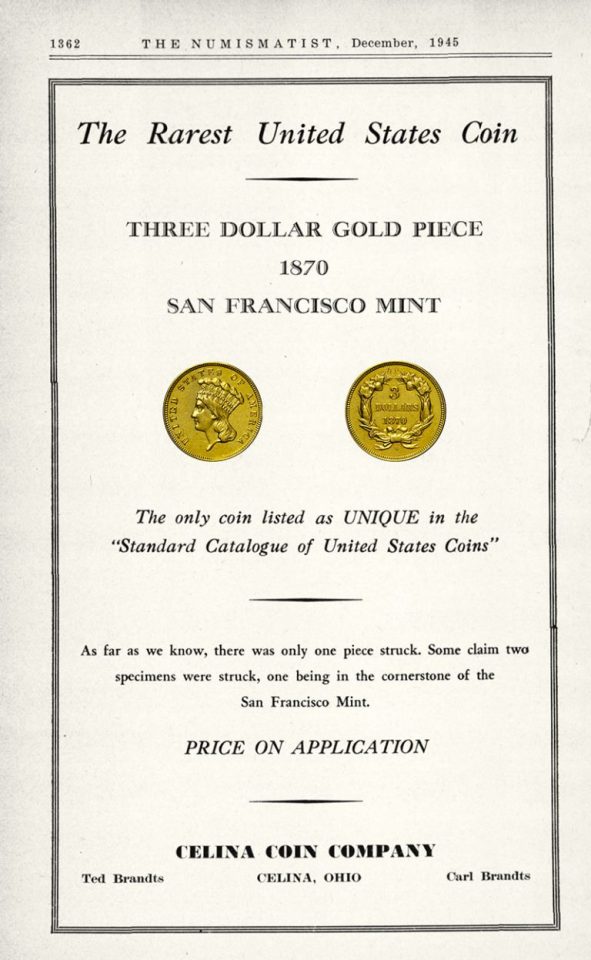
The 1870-S $3 gold coin passed through the hands of a number of prominent numismatists after it surfaced. William H. Woodin bought the coin from Van Camp in 1907. In 1911, it was sold from Woodin’s collection. Waldo Newcomer purchased the coin and placed it in his legendary collection. Colonel E.H.R. Green owned the coin from 1931 to 1936. Two prominent coin dealers, B. Max Mehl and Abe Kosoff, both handled the coin. In December 1945, dealers Ted and Carl Brandts published a full-page ad in the Numismatist offering the coin, calling it “the only coin listed as Unique in the Standard Catalogue of United States Coins“. Louis Eliasberg, a famous New York numismatist, bought the coin in 1946 and it remained in his collection for nearly four decades. Harry W. Bass Jr. bought the coin in 1982 for $687,500 from Bowers and Ruddy’s Eliasberg Sale. The latter portions of its long, star-studded provenance earned it the nickname “Eliasberg-Bass Specimen”. Since 2000, the Eliasberg-Bass Specimen has been on display at the American Numismatic Association’s Edward C. Rochette Money Museum in the Harry W. Bass Jr. Collection, part of the only complete collection of U.S. $3 gold coins.
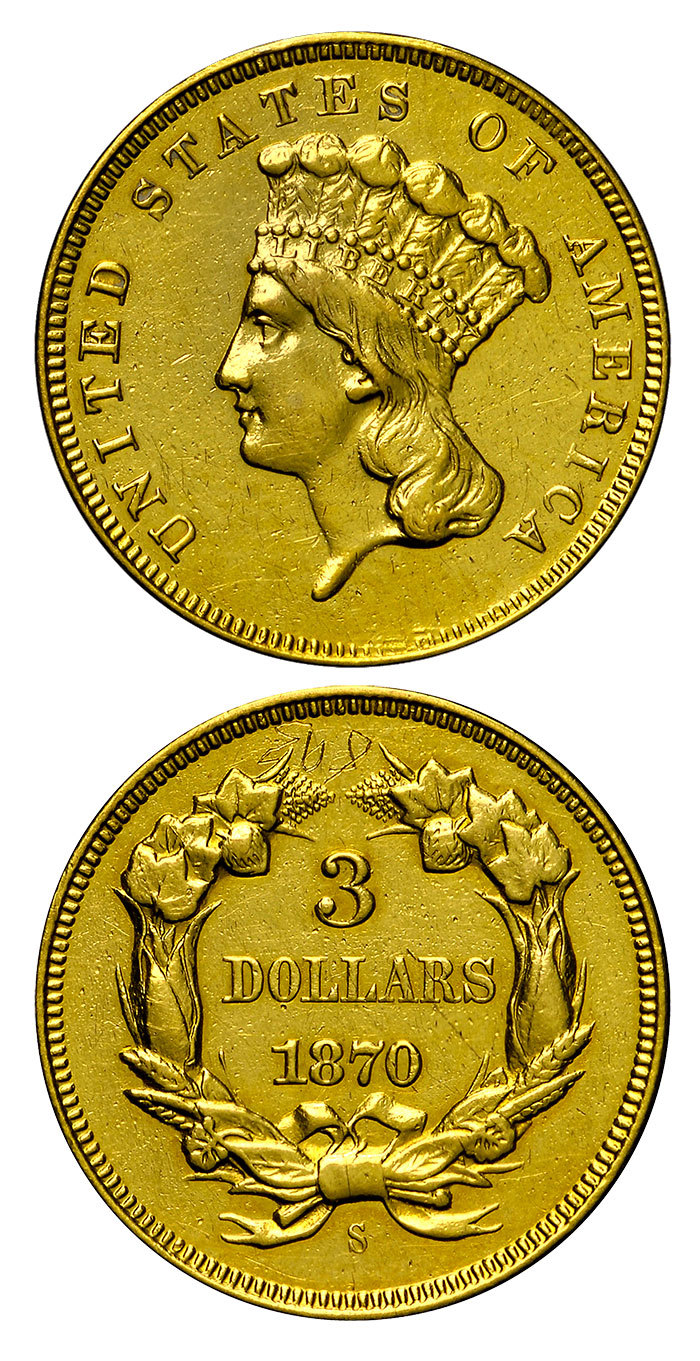
As for condition, the coin exhibits detail consistent with a grade of Extremely Fine. Many observers point to its “pebbled” appearance as evidence of it being used in jewelry. The Harry Bass Jr. Foundation’s website describes the obverse and reverse:
Obverse: Die scratch from denticle above O(F) to (O)F. Reused for Proofs of 1874 and 1875. Very lightly hubbed; tops only of J.B.L. visible, portion of front of headdress missing (distinctive). No ‘Ghosting’. Reverse: Open 3. Date very low, barely above ribbon loop; level relative to DOLLARS. All characters firmly punched and distinct. Left interior leaf opposite date is a thin, broken remnant with minuscule base at junction with wreath leaf below. Right interior leaf is thin. Lower one-third of left bow loop and center space filled. Right loop clear with but a stub of vertical ribbon element within, and none projecting into field from top of right loop.
The Bass description makes no mention of the graffiti that mars the top of the reverse or the tiny “3” that appears on the leaf that runs parallel and to the left of the bottom of the three.
A Third Example Surfaces?
In 2012, gold collectors sat up and took notice as Georgia-based Four Season Auction Gallery claimed that another 1870-S gold $3 coin had been discovered in San Francisco and would be auctioned. Four Seasons claimed that the coin was found embedded in a souvenir book by a European tourist in 1997, and the coin drew widespread media attention; Fox News reported the auction firm’s claim that the coin could fetch $3 or $4 million.
A number of experts doubted the coin’s authenticity and before the auction, it was not authenticated by any reputable grading service, and ultimately, the coin was withdrawn. Dave Harper wrote critically in Numismatic News:
“If I had $2 million or $4 million, I certainly would not be bidding on what is claimed to be a possible second example of an 1870-S $3 gold piece.”
While the Four Season coin’s authenticity has never been established, the firm’s estimate of its potential value (had it been authentic) was not far off. Doug Winter shared an estimate of the 1870-S $3 gold coin’s value on the CoinWeek Podcast as being $5 million. In talking about the Bass coin, how on exhibit at the ANA’s Money Museum, he elaborated that such a coin would likely only interest experienced collectors because of its impaired appearance and niche appeal.
“It’s not an especially attractive coin,” Winter said. “I think it would be very difficult to get somebody that knows nothing about coins excited about a no-grade 1870-S $3.”
Nevertheless, the 1870-S $3 gold piece was ranked #17 among in the fifth edition of Jeff Garrett’s 100 Greatest U.S. Coins. It is an exceptionally rare coin about which many stories have been told. Far from a perfect coin, its murky history, and impressive provenance place it among the most notable American numismatic rarities and an enigma in the U.S. series.
And you can’t assemble a complete collection of U.S. coins without it.
Coin Specifications
Country: USA Year Of Issue: 1870 Denomination: Three Dollars Mint Mark: S (San Francisco) Mintage: 2 Alloy: .900 gold, .100 copper Weight: 5.015 g Diameter: 20.5 mm Edge: Reeded OBV Designer James B. Longacre REV Designer James B. Longacre Quality: Business Strike
By CoinWeek IQ.
#The U.S. 1870-S $3 Gold Coin#gold#gold coin#collectable coins#rare#unique#treasure#ancient artifacts#history#history news#long reads
27 notes
·
View notes
Text
Today the Church remembers the 108 Blessed Polish Martyrs.
Orate pro nobis.
The 108 Blessed Polish Martyrs were Roman Catholic Christians in Poland killed during World War II by the Nazis, either in the concentration camps or by mass slaughter on the streets. The group comprises 3 bishops, 79 priests, 7 male religious, 8 female religious, and 11 lay people. There are two parishes named for the 108 Martyrs of World War II in Powiercie in Koło County, and in Malbork, Poland.
The 108 Blessed Martyrs were beatified on 13 June 1999 by Pope John Paul II in Warsaw, Poland.
List of Martyrs
Bishops
1. Antoni Julian Nowowiejski (1858–1941 KL Soldau), bishop
2. Leon Wetmański (1886–1941 KL Soldau), bishop
3. Władysław Goral (1898–1945 KL Sachsenhausen), bishop
Priests
1. Adam Bargielski, priest from Myszyniec (1903–1942 KZ Dachau)
2. Aleksy Sobaszek, priest (1895–1942 KL Dachau)
3. Alfons Maria Mazurek, Carmelite friar, prior, priest (1891–1944, shot by the Gestapo)
4. Alojzy Liguda, Society of the Divine Word, priest (1898–1942 KL Dachau)
5. Anastazy Jakub Pankiewicz, Franciscan friar, priest (1882–1942 KL Dachau)
6. Anicet Kopliński, Capuchin friar, priest in Warsaw (1875–1941)
7. Antoni Beszta-Borowski, priest, dean of Bielsk Podlaski (1880–1943, shot near Bielsk Podlaski)
8. Antoni Leszczewicz, Marian Father, priest (1890–1943, burnt to death in Rosica, Belarus)
9. Antoni Rewera, priest, dean of the Cathedral Chapter in Sandomierz (1869–1942 KL Dachau)
10. Antoni Świadek, priest from Bydgoszcz (1909–1945 KL Dachau)
11. Antoni Zawistowski, priest (1882–1942 KL Dachau)
12. Bolesław Strzelecki, priest (1896–1941 KL Auschwitz)
13. Bronisław Komorowski, priest (1889–22 March 1940 KL Stutthof)
14. Dominik Jędrzejewski, priest (1886–1942 KL Dachau)
15. Edward Detkens, priest (1885–1942 KL Dachau)
16. Edward Grzymała, priest (1906–1942 KL Dachau)
17. Emil Szramek, priest (1887–1942 KL Dachau)
18. Fidelis Chojnacki, Capuchin friar, priest (1906–1942, KL Dachau)
19. Florian Stępniak, Capuchin friar, priest (1912–1942 KL Dachau)
20. Franciszek Dachtera, priest (1910–23 August 1942 KL Dachau)
21. Franciszek Drzewiecki, Orionine Father, priest (1908–1942 KL Dachau); from Zduny, he was condemned to heavy work in the plantation of Dachau. While he was bending over tilling the soil, he adored the consecrated hosts kept in a small box in front of him. While he was going to the gas chamber, he encouraged his companions, saying "We offer our life for God, for the Church and for our Country".
22. Franciszek Rogaczewski, priest from Gdańsk (1892–1940, shot in Stutthof or in Piaśnica, Pomerania)
23. Franciszek Rosłaniec, priest (1889–1942 KL Dachau)
24. Henryk Hlebowicz, priest (1904–1941, shot at Borisov in Belarus)
25. Henryk Kaczorowski, priest from Włocławek (1888–1942)
26. Henryk Krzysztofik, religious priest (1908–1942 KL Dachau)
27. Hilary Paweł Januszewski, religious priest (1907–1945 KL Dachau)
28. Jan Antonin Bajewski, Conventual Franciscan friar, priest (1915–1941 KL Auschwitz); of Niepokalanow. These were the closest collaborators of St Maximilian Kolbe in the fight for God's cause and together suffered and helped each other spiritually in their offering their lives at Auschwitz
29. Jan Franciszek Czartoryski, Dominican friar, priest (1897–1944)
30. Jan Nepomucen Chrzan, priest (1885–1942 KL Dachau)
31. Jerzy Kaszyra, Marian Father, priest (1910–1943, burnt to death in Rosica, Belarus)
32. Józef Achilles Puchała, Franciscan friar, priest (1911–1943, killed near Iwieniec, Belarus)
33. Józef Cebula, Missionary Oblate, priest (23 March 1902 – 9 May 1941 KL Mauthausen)[
34. Józef Czempiel, priest (1883–1942 KL Mauthausen)
35. Józef Innocenty Guz, Franciscan friar, priest (1890–1940 KL Sachsenhausen)
36. Józef Jankowski, Pallotine, priest (1910 born in Czyczkowy near Brusy, Kashubia (died 16 October 1941 in KL Auschwitz beaten by a kapo)
37. Józef Kowalski, Salesian, priest (1911–1942) , priest beaten to death on 3 July 1942 in the KL Auschwitz concentration camp
38. Józef Kurzawa, priest (1910–1940)
39. Józef Kut, priest (1905–1942 KL Dachau)
40. Józef Pawłowski, priest (1890–9 January 1942 KL Dachau)
41. Józef Stanek, Pallottine, priest (1916–23 September 1944, murdered in Warsaw)
42. Józef Straszewski, priest (1885–1942 KL Dachau)
43. Karol Herman Stępień, Franciscan friar, priest (1910–1943, killed near Iwieniec, Belarus)
44. Kazimierz Gostyński, priest (1884–1942 KL Dachau)
45. Kazimierz Grelewski, priest (1907–1942 KL Dachau)
46. Kazimierz Sykulski, priest (1882–1942 KL Auschwitz)
47. Krystyn Gondek, Franciscan friar, priest (1909–1942 KL Dachau)
48. Leon Nowakowski, priest (1913–1939)
49. Ludwik Mzyk, Society of the Divine Word, priest (1905–1940)
50. Ludwik Pius Bartosik, Conventual Franciscan friar, priest (1909–1941 KL Auschwitz); of Niepokalanow. These were the closest collaborators of St Maximilian Kolbe in the fight for God's cause and together suffered and helped each other spiritually in their offering their lives at Auschwitz
51. Ludwik Roch Gietyngier, priest from Częstochowa (1904–1941 KL Dachau)
52. Maksymilian Binkiewicz, priest (1913–24 July 1942, beaten, died in KL Dachau)
53. Marian Gorecki, priest (1903–22 March 1940 KL Stutthof)
54. Marian Konopiński, Capuchin friar, priest (1907–1 January 1943 KL Dachau)
55. Marian Skrzypczak, priest (1909–1939 shot in Plonkowo)
56. Michał Oziębłowski, priest (1900–1942 KL Dachau)
57. Michał Piaszczyński, priest (1885–1940 KL Sachsenhausen)
58. Michał Woźniak, priest (1875–1942 KL Dachau)
59. Mieczysław Bohatkiewicz, priest (1904–4 March 1942, shot in Berezwecz)
60. Narcyz Putz, priest (1877–1942 KL Dachau)
61. Narcyz Turchan, priest (1879–1942 KL Dachau)
62. Piotr Edward Dankowski, priest (1908–3 April 1942 KL Auschwitz)
63. Roman Archutowski, priest (1882–1943 KL Majdanek)
64. Roman Sitko, priest (1880–1942 KL Auschwitz)
65. Stanisław Kubista, Society of the Divine Word, priest (1898–1940 KL Sachsenhausen)
66. Stanisław Kubski, priest (1876–1942, prisoner in KL Dachau, killed in Hartheim near Linz)
67. Stanisław Mysakowski, priest (1896–1942 KL Dachau)
68. Stanisław Pyrtek, priest (1913–4 March 1942, shot in Berezwecz)
69. Stefan Grelewski, priest (1899–1941 KL Dachau)
70. Wincenty Matuszewski, priest (1869–1940)
71. Władysław Błądziński, Michaelite, priest (1908–1944, KL Gross-Rosen)
72. Władysław Demski, priest (1884–28 May 1940, KL Sachsenhausen)
73. Władysław Maćkowiak, priest (1910–4 March 1942 shot in Berezwecz)
74. Władysław Mączkowski, priest (1911–20 August 1942 KL Dachau)
75. Władysław Miegoń, priest, commander lieutenant (1892–1942 KL Dachau)
76. Włodzimierz Laskowski, priest (1886–1940 KL Gusen)
77. Wojciech Nierychlewski, religious, priest (1903–1942, KL Auschwitz)
78. Zygmunt Pisarski, priest (1902–1943)
79. Zygmunt Sajna, priest (1897–1940, shot at Palmiry, near Warsaw)
Religious brothers
1. Brunon Zembol, friar (1905–1942 KL Dachau)
2. Grzegorz Bolesław Frąckowiak, Society of the Divine Word friar (1911–1943, guillotined in Dresden)
3. Józef Zapłata, friar (1904–1945 KL Dachau)
4. Marcin Oprządek, friar (1884–1942 KL Dachau)
5. Piotr Bonifacy Żukowski, friar (1913–1942 KL Auschwitz)
6. Stanisław Tymoteusz Trojanowski, friar (1908–1942 KL Auschwitz)
7. Symforian Ducki, friar (1888–1942 KL Auschwitz)
Nuns and religious sisters
1. Alicja Maria Jadwiga Kotowska, sister, based on eye-witness reports comforted and huddled with Jewish children before she and the children were executed (1899–1939, executed at Piaśnica, Pomerania)
2. Ewa Noiszewska, sister (1885–1942, executed at Góra Pietrelewicka near Slonim, Belarus)
3. Julia Rodzińska, Dominican sister (1899–20 February 1945, KL Stutthof); she died having contracted typhoid serving the Jewish women prisoners in a hut for which she had volunteered.
4. Katarzyna Celestyna Faron (1913–1944, KL Auschwitz); (1913–1944), had offered her life for the conversion of an Old Catholic bishop Władysław Faron (no relation). She was arrested by the Gestapo and condemned to Auschwitz camp. She put up heroically with all the abuses of the camp and died on Easter Sunday 1944. The bishop later returned to the Catholic Church).
5. Maria Antonina Kratochwil, SSND nun (1881–1942) died as a result of the torture she endured while imprisoned in Stanisławów.
6. Maria Klemensa Staszewska (1890–1943 KL Auschwitz)
7. Marta Wołowska (1879–1942, executed at Góra Pietrelewicka near Slonim, Belarus)
8. Mieczysława Kowalska, sister (1902–1941, Soldau concentration camp in Działdowo)
Roman Catholic laity
1. Bronisław Kostkowski, alumnus (1915–1942 KL Dachau)
2. Czesław Jóźwiak (1919–1942, guillotined in a prison in Dresden)
3. Edward Kaźmierski (1919–1942, guillotined in a prison in Dresden)
4. Edward Klinik (1919–1942, guillotined in a prison in Dresden)
5. Franciszek Kęsy (1920–1942, guillotined in a prison in Dresden)
6. Franciszek Stryjas (1882–31 July 1944, Kalisz prison)
7. Jarogniew Wojciechowski (1922–1942, guillotined in a prison in Dresden)
8. Marianna Biernacka (1888–13 July 1943), executed instead of her pregnant daughter-in-law Anna, offered her life for her and her unborn grandchild)
9. Natalia Tułasiewicz (1906–31 March 1945, died in KL Ravensbrück)
10. Stanisław Starowieyski (1895–1941 in KL Dachau)
11. Tadeusz Dulny, alumnus (1914–1942 KL Dachau)
Almighty God, by whose grace and power your Holy Martyrs of Poland triumphed over suffering and were faithful even to death: Grant us, who now remember them in thanksgiving, to be so faithful in our witness to you in this world, that we may receive with them the crown of life; through Jesus Christ our Lord, who lives and reigns with you and the Holy Spirit, one God, forever and ever. Amen.
(Fr. Józef Kowalski, priest beaten to death on 3 July 1942 in the KL Auschwitz concentration camp)
(Sr. Alicja Jadwiga Kotowska, a nun killed protecting a group of Jewish children in 1939 in the mass murders in Piaśnica)

#father troy beecham#christianity#jesus#saints#god#salvation#peace#martyrs#faith#christian persecution
43 notes
·
View notes
Text


D’ALTON, Helen [SHEA, Mary Ellen] (b South Terrace, Cork, c 1850; d 5 Curlew Street, Horsleydown, London 16 March 1893)
'One of the purest contraltos to which the sister isle ever gave birth' (The Standard, 1874).
Irish mezzo-soprano who found success as a ballad singer in the 1870s and 1880s.
Mary Ellen Shea was born in Cork, the daughter of John Shea, Esq., JP (b St John’s, Newfoundland 2 July 1803; d St Anne’s Hill, Blarney, Cork 9 October 1858), a merchant, magistrate and sometime mayor of Cork, and his wife Mary Agnes née Corbett (m 21 April 1836). Shea and his father-in-law, Dan Corbett ‘of South Mall, Cork), were leading lights in the organization of Cork’s National Exhibition of 1852, and Corbett was also known locally as a ‘jovial’ amateur actor and vocalist.
Mrs Shea ‘of Buckingham Place’ gave birth to a son, Henry John Francis on 14 June 1837, another on 24 May 1842, another on 18 July 1843, lost an Edward C (‘fourth son’) 5 October 1844 aged 2 1/2 … but doesn’t seem to have gone to the press with the birth of her ‘?only’ daughter.
Miss Shea studied singing with Mrs Charlotte [Sims] Reeves, and came out, for what seems to have been the first time, under the name of Mlle Hélène D’Alton (an improbable, but Irish high-society, surname), at an Ash Wednesday Concert at Drury Lane, 10 February 1869. She gave ‘Il segreto’, ‘O Rest in the Lord’ and joined the Doria sisters in the Athalie music.

Later in the season (31 July), she sang at the Crystal Palace, alongside Christine Nilsson, Clarice Sinico, Vernon Rigby and Foli, and was favourably noticed as ‘a young lady with a very pleasing contralto voice who sang touchingly the devotional air ‘O Lord, Thou hast searched me out’ from The Woman of Samaria and ‘Gentle troubadour’. The Morning Post confirmed ‘[she] ‘sang her two airs most beautifully. She has a remarkably touching quality of voice and her style is polished and confident; her voice, a mezzo-soprano of unusual clearness, travelled to the extremity of the transept with brilliant effect’.
Mlle D’Alton was engaged to appear at George Wood’s Saturday Evening Concerts at Exeter Hall in the new year, alongside Reeves, Santley, Foli and Mlles Sinico and Monbelli (‘The Gipsies Home’, Barnett’s ‘Old Familiar Friend’), after which she accompanied Santley, Mlle Sinico and another pupil of Mrs Reeves, Annie Edmonds, to Ireland (‘the Santley concerts’) and on 17 February 1870 made her first professional appearance in her home town (‘The Gipsies' Home’, Levey’s ‘Baby Mine’ and ‘Come Home, My Sailor Boy’, Blumenthal’s ‘When we are parted’, ‘Sainted Mother’ with Miss Edmonds). The reviews paid homage to her late father, and Ireland confirmed: ‘This young lady has a voice of great richness, uncommon compass and fine free tone. She sings with judgement, proves a good education, and excited a genuine admiration. She is likely to be very successful.’ ‘She always sings with truth, has admirable restraint, never exaggerates, and is sure to please’.

Back in London, Miss Helen D’Alton was billed with another young Mrs-Reeves-trained vocalist, the Scottish Jane Allan Stephen, in Sims Reeves’s Benefit concert (18 March), and over the following seasons, the said Miss D’Alton would appear, on frequent occasions, on concert bills in which Reeves was starred, both in London and in the provinces.
In between, she appeared at the Crystal Palace (14 May 1870) with the stars of the Italian opera, at the Glasgow Saturday Evening Concerts (‘Scenes of youth’, ‘Rich are rare were the jewels’, ‘Looking Back’), and made a single Ash Wednesday appearance at the Boosey Ballad Concerts (22 February 1871, ‘The Blind Girl’s Dream’ with ‘genuine feeling and expression’, Hawes’s ‘I’ll speak of thee’ and ‘O’er shepherd’s pipe’ with Santley). She gave her ‘Blind Girl’s Dream’, alongside Reeves and Santley, at Leicester, and, on 29 April 1871, she sang the title-role, alongside Mme Lemmens-Sherrington, Reeves and Patey, in Roeckel’s cantata The Fair Rosamund at the Crystal Palace and, the following year, his The Sea Maidens ('Maiden Muriel'). At Mr Austin’s concert she sang ‘I dreamed I was in heaven’ from Naaman, and she ventured wholly into oratorio with a Messiah with the National Choral Society, the Rossini Stabat Mater at the Covent Garden proms, an Israel in Egypt with Reeves at the Sacred Harmonic Society and in Carter’s Evangeline at the Albert Hall.

The oratorio experience was evidently not wholly convincing. Over the years that followed, Miss D’Alton would appear, on occasion, in oratorio – from The Messiah (‘scarcely seemed equal to the contralto music’, Manchester, 'scarcely powerful enough for so large a hall' Birmingham) to The Light of the World and The Prodigal Son (Manchester, 7 February 1874), Judas Maccabeus at Bristol, Jephtha/Last Judgement at Cardiff -- in the provinces, but her frequent London engagements were almost entirely in concert, where her evident speciality was modern ballad music. Pieces such as Mme Sainton-Dolby’s ‘He thinks I do not love him’, Sullivan’s ‘Golden Days’, The Distant Shore’, Looking back' and ‘Will He Come?’, Odoardo Barri’s ‘Mizpah’, ‘Love’s Golden Past’ and ‘The Shadow of the Cross’, Virginia Gabriel’s ‘A Shadow’, Gounod’s ‘Oh that we two were maying’, ‘Meeting Again’ by Cotsford Dick or Charles Salaman’s ‘Eva Tual’ and ‘Loved One’ were delivered in her ‘tuneful contralto voice and unobtrusive style’, her ‘excellent contralto voice and unaffected style’, to good effect. Very occasionally an operatic piece – ‘Ah! s’estinto’, 'Araby, dear Araby' or ‘Quando a te lieta’ – would appear alongside the new ballads, and the classic ones ('The Harp that once through Tara's Halls, 'O, Erin my country', Samuel Lover’s ‘What will you do, love?’, 'John Anderson, my Jo', 'By the sad sea waves'), a little more frequently an item from oratorio (Hiller's 'Lord, whom my immortal soul'), but rarely did Miss D’Alton venture into the world of the dramatic. I spot her, in 1874, singing in a selection from The Bohemian Girl at the Albert Hall, in 1875, during a modest appearance at the Norwich Festival, as a late replacement, she sang in some pieces of a local operetta, The Science of Love, and in 1878 she took part in a concert performance of Il Trovatore at the Royal Aquarium.

Miss D’Alton, in fact, became quite a regular at the Royal Aquarium where, apart from ballads and the ephemeral operatic experience, she also sang several times in the Stabat Mater (alongside the fireworks and freak shows), and she became an equally familiar presence at the promenade concerts staged annually at the Theatre Royal, Covent Garden. She took part in these ‘proms’ as late as 1887. On several occasions, too, she appeared in the prestigious Boosey Ballad Concerts (‘My Love has gone a sailing’ by Molloy, Linley's ‘Primroses deck the bank's green side’, ‘The Bailiff’s Daughter of Islington’), but without becoming a regular participant.

For a number of years, the 'clever and popular young vocalist' went on the road with Sims Reeves, in varying concert party combinations, alongside Gertrude Cave-Ashton, Foli, Agnes Larkcom et al – and again with Edith Wynne – but her name appeared, it seemed, most frequently on the ballad sheet-music which flowed from the various publishers’ lists: Cowen’s ‘The Better Land’, 'Love and Duty' and ‘A Song and a Rose’, Molloy’s ‘The Old Street Lamp’, ‘The Harbour Bar’, Ignace Gibsone’s ‘The Missing Ship’, Roeckel’s ‘Poppies in the Corn’ and 'A Midnight Song', Stephen Adams’s ‘In heart we both are young’, ‘The Children of the City’ and ‘True Hearts’, ‘I cannot forget’, Blumenthal’s ‘The Old, Old Story’ and ‘Lucy Gray’, Moulton’s ‘Beware’ and ‘I love my love’, Fanning’s ‘Something sweet to tell you’, Campana’s ‘Her Faithful Heart’, Milton Wellings’s ‘Young love that slumbers’, Owen Hope’s ‘In Happier Days’, Caroline Lowthian’s ‘Gates of the West’, Malcolm Watson's 'A Winter Story', as an adjunct to Antoinette Sterling on ‘The Lost Chord’ and to Mme Sainton-Dolby on a number of songs, and, latterly, on the songs of Isidore de Lara ('The Garden of Sleep', 'Once and For Ever'). As late as 1889, Miss D’Alton appeared on the bills of the Monday pops, with a new song by Maude Valerie White.
By the middle of the 1880s, however, she was appearing much less in public and, apart from the Covent Garden proms, largely in charity concerts and on fashionable society programmes. By the time, in 1889 (14 August), that she became the wife of Mr Fallon Percy Wightwick MD MRCS LRCP MB, a well-known medical man, she was appearing only a handful of times a season.
Helen D’Alton’ died just a few years after her marriage, and her obituary insisted that she was ‘a few years ago a highly popular contralto vocalist’. Which was more or less true. ‘Tuneful contralto voice and unobtrusive style’ had probably described her better.
It also insisted that she was thirty-eight years of age. Which was not true at all.She (vocalist, aged 20) and widowed mamma (52) can be seen lodging in Salisbury Street, Westminster in 1871 …

#classical music#opera#music history#bel canto#composer#classical composer#aria#classical studies#maestro#chest voice#Helen D'Alton#mezzo-soprano#contralto#classical musician#classical musicians#classical history#opera history#history of music#history#historian of music#musician#musicians#diva#prima donna
5 notes
·
View notes
Text

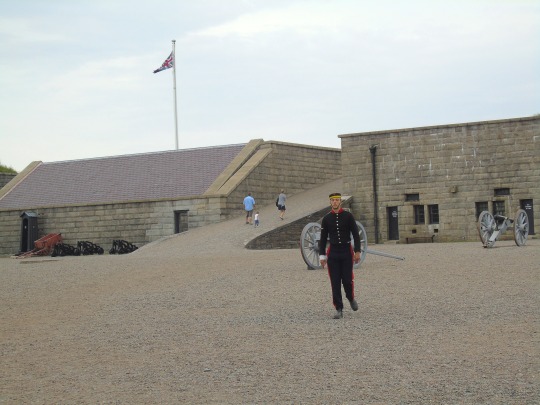
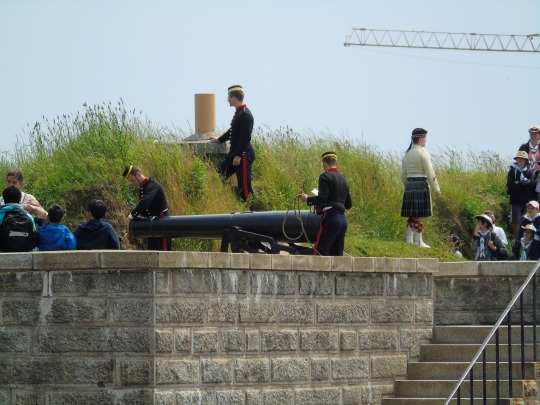
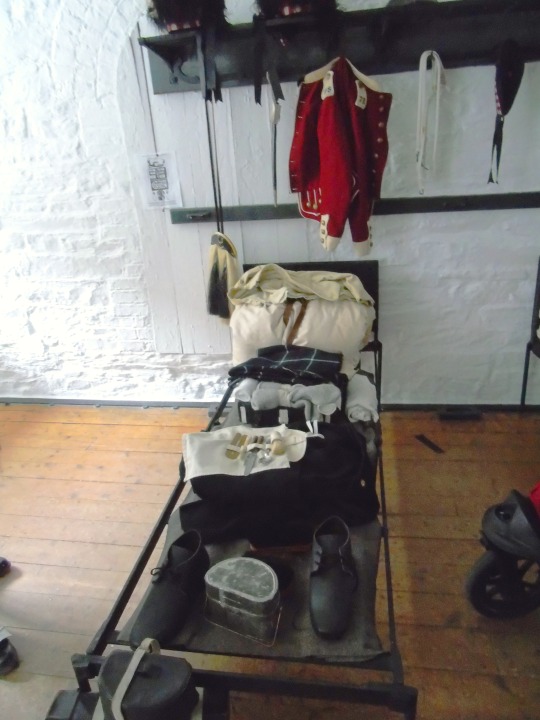
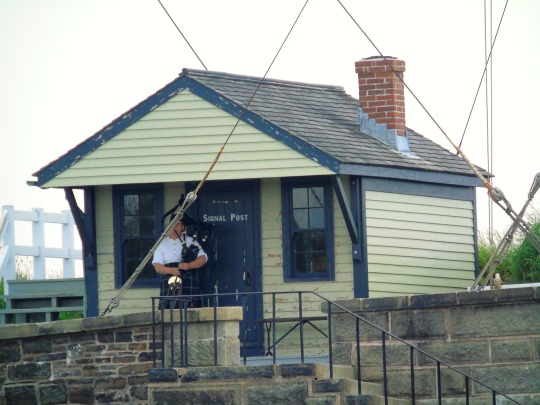
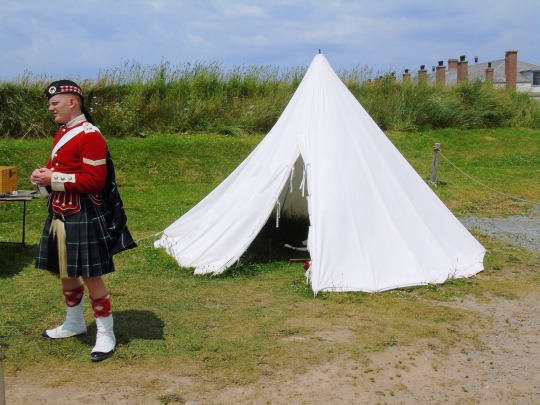
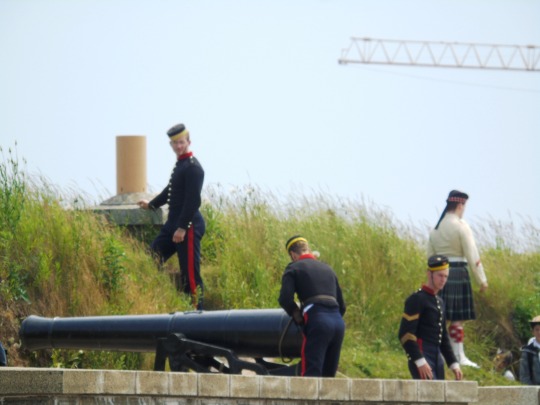
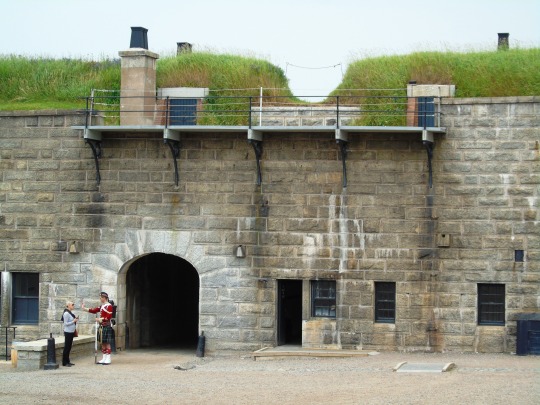

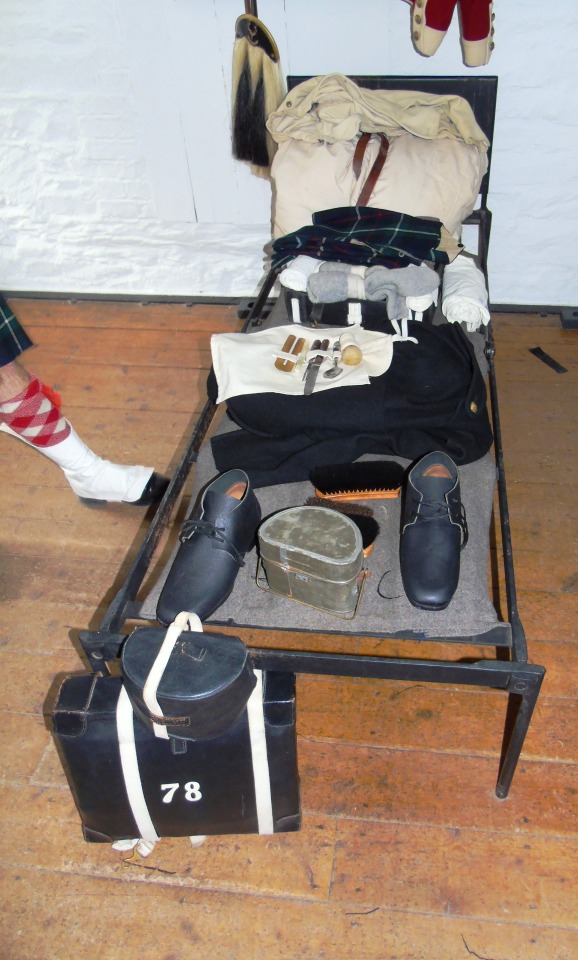
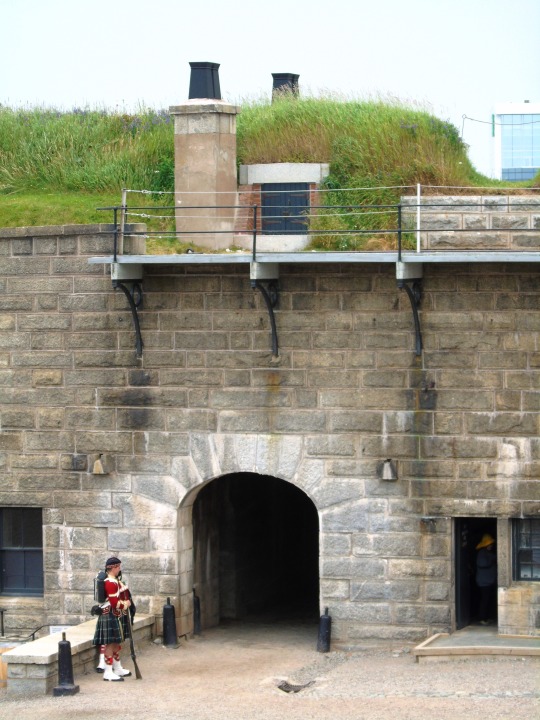


The renowned 78th Highlanders Regiment of Foot were stationed at Halifax for almost three years (1869-1871). The regiment arrived in Halifax on the afternoon of May 14, 1869, aboard the troopship HMS Crocodile.
A total of 765 men disembarked in full dress uniform. The Regiment was divided into two depots and eight service companies, consisting in all of 34 officers, 49 sergeants, 21 drummers, 6 pipers, and 600 rank and file.
#78th Highlanders Regiment of Foot#arrived#Halifax#14 May 1869#history#155th anniversary#Halifax Citadel National Historic Site of Canada#Nova Scotia#summer 2015#original photography#kilt#old uniform#Historical reenactment#landmark#tourist attraction#Fort George#tent#Third Brigade of the Royal Artillery#Barracks#cot#travel#vacation#cityscape#architecture
0 notes
Photo

John Stuart Mill
John Stuart Mill (1806-1873) was a highly influential English philosopher of the Victorian Era. His writings were influenced by the Enlightenment thinkers and German Romanticism. Besides philosophical works, he wrote on mathematics, language, and logic. Well ahead of his time, he advocated the abolition of slavery and was a proponent of both children's and women's rights. However, he is best remembered for his essays on utilitarianism, a philosophy developed by Jeremy Bentham (1748-1832).
Life
Born on 20 May 1806 in London, England, John Stuart Mill was the son of the Scottish radical thinker James Mill. James had moved to London to promote Bentham's utilitarian philosophy. Through his father's use of the Socratic method, John was educated by James in the psychological and educational principles of utilitarianism. He was schooled in law, psychology, economics, mathematics, and logic. James Strangroom in his The Great Philosophers wrote that Mill's father's aim was to turn him into a calculation machine. Some believe James accomplished his goal. At the age of three, he read Greek, and at age eight, Latin. By the time he was 14, he had read most of the classic Greek and Latin texts in their original languages. Later, while still in his teens, he edited many of Bentham's unpublished manuscripts.
Like his father, at age 17, he began to rise through the ranks of the British East India Company, remaining there until it closed in 1858. He suffered a nervous breakdown when he was 20. Many believe his repeated bouts of depression were a reaction to the impersonal disciplined teaching of his father and the overwhelming domination that his father imposed on everything in his life. In his The Great Philosophers, Jeremy Strongroom wrote that Mill had been prepared for argumentation and analysis but received no training to help him cope with emotional moods. Luckily, his newfound interest in culture, theater, and the works of English poet William Wordsworth (1770-1850) helped him escape his depression.
In 1852, he married a long-time friend, Harriet Taylor, two years after the death of her first husband. She proved to have a significant influence on Mill as his foremost consultant and critic. She died in 1858. Seven years later, he became a member of Parliament (1865-1868) serving only one term. Mill died on 8 May 1873 in Avignon, France. Among his major works are A System of Logic (1853), On Liberty (1859), and The Subjection of Women (1869).
Continue reading...
23 notes
·
View notes
Text
Le foil est une aile positionnée sous un support une coque de bateau ou planche, qui vise à réduire les frottements avec l’eau pour agir sur la vitesse et la stabilité du support grâce à la force de portance. Pour le sport on utilise les termes de Kitefoil, Windfoil, Wingfoil, SUPfoil, Surf-foil et Wakefoil. Une nouveauté pour vous certainement cependant il fut inventé en 1868
L’historique du foil, depuis plus d’un siècle les ingénieurs et architectes navals ont voulu trouver une nouvelle technologie qui permette à un bateau d’augmenter sa vitesse en surélevant la coque au dessus de l’eau. En 1869, Emmanuel Farcot dépose un brevet d’un bateau hérissé de nombreux petits foils le long de la coque afin de diminuer la trainée. A partir de 1894, l’américain William E. Meacham pousse plus loin le concept des foils. Il invente le bateau de 14 pieds détenant le plus vieux record dans ce domaine. En 1960, Thomas Moy adapte trois plans sur un bateau qu’il fera naviguer sur « Grand Surrey Canal », au sud de Londres. En 1976, Eric Tabarly élabore un prototype qui est la genèse du trimaran, après les années 2000, le concept du foil a été créé grâce à l’invention de matériaux plus résistants comme le carbone. De nos jours la notion de foil est très peu connue, mais c’est un concept impressionnant et très convoité par le monde de la navigation. Une nouvelle génération de bateau a été construit comme « l’hydroptère ». Dernièrement, les foils se sont modernisés dans le but de gagner de plus en plus de vitesse


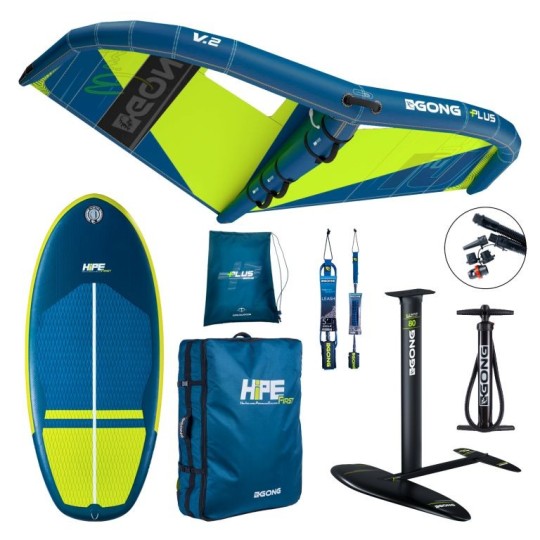

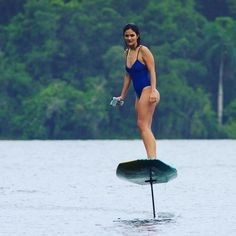


The history of the foil, for more than a century naval engineers and architects have wanted to find a new technology that allows a boat to increase its speed by raising the hull above the water. In 1869, Emmanuel Farcot filed a patent for a boat bristling with numerous small foils along the hull in order to reduce drag. From 1894, the American William E. Meacham pushed the concept of foils further. He invented the 14-foot boat holding the oldest record in this field. In 1960, Thomas Moy adapted three plans for a boat that he would sail on the "Grand Surrey Canal", south of London. In 1976, Eric Tabarly developed a prototype which was the genesis of the trimaran, after the 2000s, the concept of the foil was created thanks to the invention of more resistant materials such as carbon. Nowadays the concept of foil is very little known, but it is an impressive concept and very coveted by the world of navigation. A new generation of boat was built as the “hydrofoil”. Lately, foils have been modernized in order to gain more and more speed

Le projet de Tanguy le Bihan sur l'hybride foiling. Dès lors une découverte et peut-être un essai sur le Lac d'Annecy
13 notes
·
View notes
Text


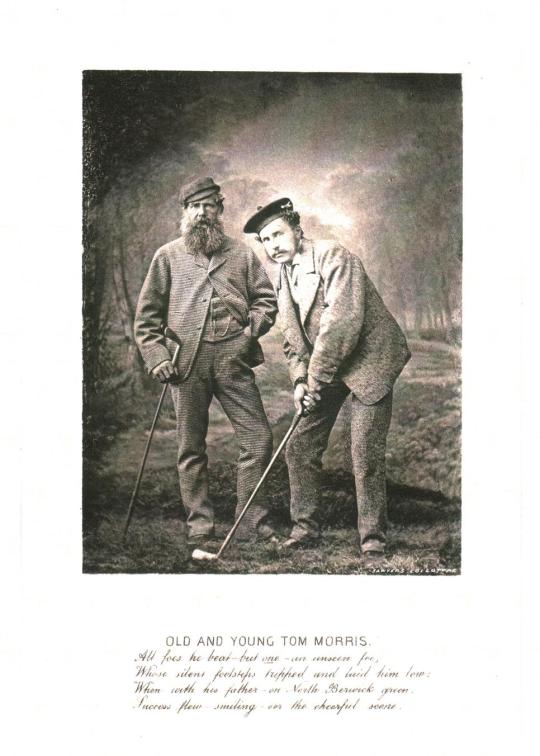
On 20th April 1851 Tom Morris Jnr was born in St Andrews.
Being born in St Andrews to Tom Morris senior, Junior ended up with the tag “Young Tom” and his father “Old Tom” both were great golfers when the sport was just taking off, Young Tom won 4 Open Championships and would undoubtedly have won more if it wasn’t for his untimely and tragic death at the age of just 24.
Morris’ introduction to golf came over the Prestwick Golf Links, where his father was the greenskeeper. When he was 13, Young Tom beat Old Tom in a match for the first time - his father was the reigning Open champion, so that was a pretty big achievement.
Young Tom played in the Open for the first time in 1865, when he was just 14 years old and won became Open Champion at just 17 in 1868, retaining the title in 1869 and winning again in 1870. At this time the golfers were playing for the Championship belt and the rules stated three straight wins and you got to keep the belt, it left the tournament organizers with a problem: They no longer had anything to present to the winner.
There was no tournament in 1871 (largely because there was no “trophy” to present), but by 1872 the now-famous “Claret Jug” was ready, and Young Tom Morris won that trophy, too, in its first year.
Tommy also recorded the first hole-in-one in the history of professional golf in the first round of the 1869 Open Championship at Prestwick, acing the 166 yard Station Hole.
Three years later, Morris was playing an exhibition match when he received word that his pregnant wife, Margaret, had gone into a difficult labour. Only two holes remained in the match; Old Tom and Young Tom finished the match, winning, and hurried home by ship across the Firth of Forth and up the coast, but when Young Tom got there both his wife and newborn baby were dead. Young Tom was broken-hearted. Not quite four months later, on Christmas Day, he too died, they say of a broken heart but he had played a match three weeks previous in appalling conditions and on his death it was discovered he had a bleed in his lungs so his love of the game and Scotland's harsh weather may have weakened him.
Who knows how many more titles he would have won, his father remains the oldest Open winner at 46 years old.
Young Tom Morris was outlived by Old Tom by more than 30 years. He is buried beside his wife and son in the Cathedral Burial Ground at St. Andrews, a memorial to him is beside his grave as seen in the pic.
9 notes
·
View notes
Text
irl bsd authors
i haven't found a list of irl bsd authors listed from oldest to most recent so i decided to do that. multiple lists for date of birth, death, and publication of the work their ability is based on (if applicable) + fun stuff at the end
birth dates (oldest to most recent)
alexander pushkin - 6 Jun 1799
nathaniel hawthorne - 4 Jul 1804
edgar allan poe - 19 Jan 1809
nikolai gogol - 1 Apr 1809
ivan gonchorav - 18 Jun 1812
herman melville - 1 Aug 1819
fyodor dostoevsky - 11 Nov 1821
jules verne - 8 Feb 1828
saigiku jōno - 24 Sep 1832
louisa may alcott - 29 Nov 1832
yukichi fukuzawa - 10 Jan 1835
mark twain - 30 Nov 1835
ōchi fukuchi - 13 May 1841
paul verlaine - 30 Mar 1844
bram stoker - 8 Nov 1847
tetchō suehiro - 15 Mar 1849
arthur rimbaud - 20 Oct 1854
ryūrō hirotsu - 15 Jul 1861
ōgai mori - 17 Feb 1862
h. g. wells - 21 Sep 1866
natsume sōseki - 9 Feb 1867
kōyō ozaki - 10 Jan 1868
andré gide - 22 Nov 1869
doppo kunikida - 30 Aug 1871
katai tayama - 22 Jan 1872
ichiyō higuchi - 2 May 1872
kyōka izumi - 4 Nov 1873
lucy maud montgomery - 30 Nov 1874
akiko yosano - 7 Dec 1878
santōka taneda - 3 Dec 1882
teruko ōkura - 12 Apr 1886
jun'ichirō tanizaki - 24 Jul 1886
yumeno kyūsaku - 4 Jan 1889
h. p. lovecraft - 20 Aug 1890
agatha christie - 15 Sep 1890
ryūnosuke akutagawa - 1 Mar 1892
ranpo edogawa - 21 Oct 1894
kenji miyazawa - 27 Aug 1896
f. scott fitzgerald - 24 Sep 1896
margaret mitchell - 8 Nov 1900
motojirō kajii - 17 Feb 1901
mushitarō oguri - 14 Mar 1901
john steinbeck - 27 Feb 1902
aya kōda - 1 Sep 1904
ango sakaguchi - 20 Oct 1906
chūya nakahara - 29 Apr 1907
atsushi nakajima - 5 May 1909
osamu dazai - 19 Jun 1909
sakunosuke oda - 26 Oct 1913
michizō tachihara - 30 Jul 1914
tatsuhiko shibusawa - 8 May 1928
(ace) alan bennett - 9 May 1934
yukito ayatsuji - 23 Dec 1960
mizuki tsujimura - 29 Feb 1980
death dates (oldest to most recent)
alexander pushkin - 10 Feb 1837
edgar allan poe - 7 Oct 1849
nikolai gogol - 4 Mar 1852
nathaniel hawthorne - 19 May 1864
fyodor dostoevsky - 9 Feb 1881
louisa may alcott - 6 Mar 1888
ivan goncharov - 27 Sep 1891
herman melville - 28 Sep 1891
arthur rimbaud - 10 Nov 1891
paul verlaine - 8 Jan 1896
tetchō suehiro - 5 Feb 1896
ichiyō higuchi - 23 Nov 1896
yukichi fukuzawa - 3 Feb 1901
saigiku jōno - 24 Jan 1904
jules verne - 24 Mar 1905
kōyō ozaki - 30 Oct 1903
ōchi fukuchi - 4 Jan 1906
doppo kunikida - 23 Jun 1908
mark twain - 21 Apr 1910
bram stoker - 20 Apr 1912
natsume sōseki - 9 Dec 1916
ōgai mori - 8 Jul 1922
ryūrō hirotsu - 25 Oct 1928
ryūnosuke akutagawa - 24 Jul 1927
katai tayama - 13 May 1930
motojirō kajii - 24 Mar 1932
kenji miyazawa - 21 Sep 1933
yumeno kyūsaku - 11 Mar 1936
h. p. lovecraft - 15 Mar 1937
chūya nakahara - 22 Oct 1937
michizō tachihara - 29 Mar 1939
kyōka izumi - 7 Sep 1939
santōka taneda - 11 Oct 1940
f. scott fitzgerald - 21 Dec 1940
lucy maud montgomery - 24 Apr 1942
mushitarō oguri - 10 Feb 1946
h. g. wells - 13 Aug 1946
akiko yosano - 29 May 1942
atsushi nakajima - 4 Dec 1942
sakunosuke oda - 10 Jan 1947
osamu dazai - 13 Jun 1948
margaret mitchell - 16 Aug 1949
andré gide - 19 Feb 1951
ango sakaguchi - 17 Feb 1955
teruko ōkura - 18 Jul 1960
ranpo edogawa - 28 Jul 1965
jun'ichirō tanizaki - 30 Jul 1965
john steinbeck - 20 Dec 1968
agatha christie - 12 Jan 1976
tatsuhiko shibusawa - 5 Aug 1987
aya kōda - 31 Oct 1990
(ace) allan bennett - still alive
yukito ayatsuji - still alive
mizuki tsujimura - still alive
work (oldest to most recent)
alexander pushkin - A Feast in Time of Plague, 1830
edgar allan poe - The Murders in Rue Morgue, 1841
nikolai gogol - The Overcoat, 1842
edgar allan poe - The Black Cat, 19 Aug 1843
nathaniel hawthorne - The Scarlet Letter, 1850
herman melville - Moby-Dick, 1851
louisa may alcott - Little Women, 1858
fyodor dostoevsky - Crime and Punishment, 1866
ivan goncharov - The Precipice, 1869
yukichi fukuzawa - An Encouragement of Learning, 1872-76
jules verne - The Mysterious Island, 1875
mark twain - The Adventures of Tom Sawyer, 1876
mark twain - Adventures of Huckleberry Finn, 1884
tetchō suehiro - Plum Blossoms in the Snow, 1886
arthur rimbaud - Illuminations, 1886
saigiku jōno - Priceless Tears, 1889
ōchi fukuchi - The Mirror Lion, A Spring Diversion, Mar 1893
ryūrō hirotsu - Falling Camellia, 1894
h. g. wells - The Time Machine, 1895
kōyō ozaki - The Golden Demon, 1897
bram stoker - Dracula, 1897 (his ability has not been named, but c’mon, vampires)
akiko yosano - Thou Shall Not Die, 1903
natsume sōseki - I Am a Cat, 1905-06
katai tayama - Futon, 1907
lucy maud montgomery - Anne of Green Gables, 1908
ōgai mori - Vita Sexualis, 1909
andré gide - Strait is the Gate, 1909
kyōka izumi - Demon Pond, 1913
ryūnosuke akutagawa - Rashomon, 1915
motojirō kajii - Lemon, 1924
f. scott fitzgerald - The Great Gatsby, 1925
kenji miyazawa - Be not Defeated by the Rain, 3 Nov 1931
santōka taneda - Self-Derision, 8 Jan 1932
mushitarō oguri - Perfect Crime, 1933
chūya nakahara - This Tainted Sorrow, 1934
yumeno kyūsaku - Dogra Magra, 1935
margaret mitchell - Gone With the Wind, 1936
john steinbeck - The Grapes of Wrath, 1939
agatha christie - And Then There Were None, 6 Nov 1939
atsushi nakajima - The Moon Over the Mountain, Feb 1942
jun'ichirō tanizaki - The Makioka Sisters, 1943-48
ango sakaguchi - Discourse on Decadence, 1946
teruko ōkura - Gasp of the Soul, 1947
osamu dazai - No Longer Human, 1948
(ace) alan bennett - The Madness of King George III, 1995
yukito ayatsuji - Another, 2005
mizuki tsujimura - Yesterday’s Shadow Tag, 2015
can’t find dates:
michizō tachihara - Midwinter Memento
sakunosuke oda - Flawless
n/a: doppo kunikida, ranpo edogawa, ichiyō higuchi, h. p. lovecraft “Great Old Ones” (fictional ancient dieties eg. cthulhu), aya koda, paul verlaine, tatsuhiko shibusawa “Draconia” (umbrella term for shibusawa’s works/style)
bonus:
elise - The Dancing Girl (1890) by ōgai mori
shōsaku katsura - An Uncommon Common Man by doppo kunikida
Nobuko Sasaki (20 Jul 1878 - 22 Sep 1949) - doppo kunikida’s first wife
gin akutagawa - O-gin (1922) by ryūnosuke akutagawa
naomi tanizaki + kirako haruno - Naomi (1925) by jun'ichirō tanizaki
t. j. eckelburg + tom buchanan - The Great Gatsby (1925) by f. scott fitzgerald
the black lizard - Back Lizard (1895) by ryūrō hirotsu (+ The Black Lizard (1934) by ranpo edogawa)
some fun facts:
the oldest: aya koda 86, andré gide 81, h. g. wells 79, jun'ichirō tanizaki 79, ivan goncharov 79 (alan bennett is 89 but still alive)
the youngest: ichiyō higuchi 24, michizō tachihara 24, chūya nakahara 30
yukito ayatsuji’s Another is also an anime, released in 2012
both edgar allan poe and mark twain’s ability consist of two of the author’s work
18 notes
·
View notes
Text


Albert Racinet's "Polychrome Ornament," 1869 PLATE VI. GREEK AND GRECO-ROMAN ANTIQUITIES: SPECIMENS OF POLYCHROMATIC DECORATION.
THE accompanying plate contains numerous specimens of polychromatic decoration, taken from various periods of Greek Art, commencing from the date of the monuments in AEgina, or the Parthenon, down to that which may be called the Greco-Roman period. The colours are copied from sketches by the most competent artists. The following is a list of the subjects in the plate, Virith references to the authorities from which they are selected :-
Nos. 1, 2, 3.-Frieze and corona ornaments, from the restoration of the Parthenon, by M. Paccard. (Ecole des Beaux-Arts ; Roman section.) No. 4.-Ornaments from the frieze of the Temple of tho Wingless Victory at Athens. (Lebas, Voyage archeologie en Grece et en Asie Mineure, I., pl. 8, No. 1.) No, 5.-Ancient fragment from a panel of a corona. (Lebas, id., II., pl. 6, No. 1.) No. G.-Antefixae from the Temple of the Wingless Victory. (Lebas, id,, I., pl. G.) Nos. 7, 8, 9.-Ancient fragments from different monuments at Athens. (Lebas, id., I., pl. 8, No. 4 ; II., pl. 5, Nos. 1 and 11.) No. 10.-Decorations over the entrance to the Temple of :Minerva Polias at Athens, from the restoration of that monument by M. Tetas. (Ecole des Beaux-Arts: Roman section.) No.11.-Frieze ornament on the Temple at Paestum, from the restoration by M. Thomas. (Ecole des Beaux-Arts: Roman section.) Nos. 12, 13.-Ornament on the Temple of Jupiter Panhellenius, at AEgina, from the restoration by M. Garnier. Exterior (12); interior (13). (Ecole des Beaux-Arts: Roman section.) No. 14,-Star from the Propylaea. (Lebas, Hittorff, etc.) No. 15.-Cymatium, forming a gutter, found among the ruins of a temple at Metapontum. (Metaponte, par M, le due de Luynes et F. S. Debacq, pl. 7.) No. 16. -Face and soffit of an ornament in earthenware, serving as a covering for a beam, found at Metapontum. (Id., pl. 8.) No. 17 . -Painted mouldings. (Hittorff, Architechire polychrome chez les Grecs, pl. 9, fig. 10, p. 767 .) Nos. 18, 19.-Vitruvian scrolls. Nos. 20, 21. -Meanders. No. 22. -Painted ornaments on a sarcophagus found at Girgenti. (Hittorff, Architechire polycrome, pl. 9, p. 767.) No. 23. -Coping of wall, and ceiling in the Temple of Nemesis at Rhamnus, (Hittorff, icl., pl. 10, fig. 9, p. 768.) No. 24.-Fragment of mosaic-work found in Sicily. (Hittorff, id., pl. 5, fig. 5, p. 761.) Nos. 25, 26, 27, 29.-Interlaced ornaments. (Greco-Roman style.) No. 28.-Meanders. (Greco-Roman style.) Nos. 30, 31, 32, 33.-Ornaments in terra-cotta found at Pallazolle (Hittor:ff, pl. 7, fig. 1, 2, 3, p. 764), with the colouring given by the same author in his restoration of the Temple of Empedocles (pl. 2.) No. 34.-Ornaments. (The same restoration, pl. 3.) No. 35.-Palm leaves.
#art#1800s#1800s art#ancient history#Albert Racinet#antiquity#aesthetic#greek aesthetic#greek art#greek#ancient greek art#ancient greece#19th century#illustration#design#cultural art
6 notes
·
View notes